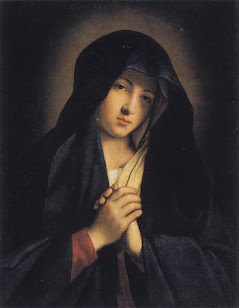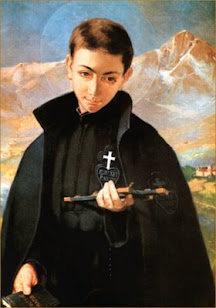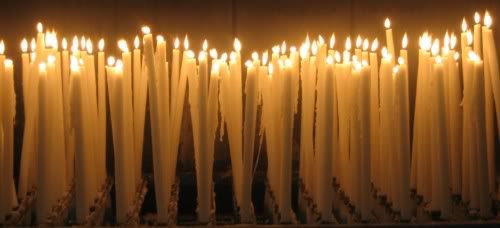gathered ‘round the gable wall
poor and humble men and women,
little children that you called.
We are gathered here before you,
and our hearts are just the same
filled with joy at such a vision,
as we praise your name.
Golden Rose, Queen of Ireland,
all my cares and troubles cease
as we kneel with love before you,
Lady of Knock, my Queen of Peace.
Though your message was unspoken,
still the truth in silence lies
as we gaze upon your vision,
and the truth I try to find.
Here I stand with John the teacher,
and with Joseph at your side
and I see the Lamb of God,
on the Altar glorified.
Golden Rose, Queen of Ireland,
all my cares and troubles cease
as we kneel with love before you,
Lady of Knock, my Queen of Peace.
And the Lamb will conquer
and the woman clothed in the sun
will shine Her light on everyone.
And the lamb will conquer
and the woman clothed in the sun,
will shine Her light on everyone.
Golden Rose, Queen of Ireland,
all my cares and troubles cease
as we kneel with love before you,
Lady of Knock, my Queen of Peace.
“Our Lady of Knock” by Dana (Rosemary Scallon)
Today, August 21, we commemorate the 1879 apparitions of Our Blessed Mother in Knock, Ireland on the Feast of Our Lady of Knock, Queen of Ireland. Along with Mary, Mother of God, Saint Joseph and Saint John the Evangelist appeared for over two hours to fifteen witnesses. Approved as authentic in 1936 by the Church, four popes and millions of pilgrims have since visited the sleepy town of Knock (Cnoc Mhuine) in Mayo County, Ireland.
In 1879, Knock was a poor village, boasting a little over a dozen humble homes clustered around an equally humble, square-towered church. The farmers of Mayo County who lived there were still trying to recover from the great potato famine of the 1840’s, and the 1879 crop was looking equally as bad. However, these tenacious residents of Knock had not lost their faith, and their devotion to Our Blessed Mother and the Lord was as strong as ever. Monsignor James Horan of Knock once noted that Our Lady’s appearance there was a “symbol of hope, consolation and strength” in this distressed region of Ireland, “where unemployment, evictions and emigration were the order of the day.”
On August 21, 1879, a number of residents of Cnoc Mhuine found themselves around the local parish church, all by various coincidences. Margaret Beirne was sent by her brother to the church, and noticed a strange radiance in the sky above the chapel. Mary Beirne was visiting the church’s housekeeper, Mary McLoughlin, for an evening visit. They stopped outside at the gables, where they could see the church in the distance. Mary later recalled exclaiming:
"Oh look at the statues! Why didn't you tell me the priest got new statues for the chapel?" Times were difficult, and new statues meant a new collection of funds.
The housekeeper responded that she knew nothing of the priest getting new statues. So, they both went for a closer look, and Mary Beirne said:
"But they are not statues, they're moving. It's the Blessed Virgin!"
Over the next two hours, Margaret, Mary, Mary, and at least twelve others viewed a heavenly vision, which hovered approximately two feet off the ground. At the center of the vision was Mary, the Mother of God. To her right stood Saint Joseph, his head inclined toward her. To her left stood Saint John the Evangelist, wearing a bishop’s miter, holding a book, arms raised as if he was preaching. Our Blessed Mother appeared to be praying, eyes raised to heaven. To the left of Saint John stood an altar upon which was the Lamb of God, in front of a cross surrounded by angels. One boy saw angels "hovering during the whole time, for an hour and a half or longer…”
From the accounts of eyewitnesses: “The three figures were clothed in dazzling white garments that shone like silver. Our Lady’s robe, strikingly white, was covered by a large white cloak that fastened at the throat and fell in ample folds to her ankles. On her head was a brilliant crown surmounted with glittering crosses and over the forehead where the crown fitted the brow was a beautiful rose. She held her hands extended apart and upward, in a position that none of the witnesses could have previously seen in any statue or picture, “in the same position as a priest holds his hands when praying at holy Mass.” Her gaze was fixed on the heavens; she did not look at any time toward the group gathered near the gable… She appeared to be praying… Three of those present noticed her bare feet… the rain was falling heavily but no rain fell on that portion of the gable where the figures were.
Saint Joseph stood on Our Lady’s right, his head bent toward her as though bowed in respect and devotion. He had more color on his face than the other figures… his hair and beard were gray… he looked old. He was at the extreme left of the gable, and Saint John, who was slightly to the right of the gable, was standing at an angle to Our Lady and at the Gospel side of the altar behind him. He was dressed as a bishop but wore a short miter rather than the usual high Bishop’s miter. He held a large open book in his left hand while he kept the fingers of his right hand raised as though preaching or teaching… The Evangelist appeared to be preaching but he heard no voice. None of the three spoke…”
The apparition of Our Lady of Knock is unique from all other Marian apparitions because of three things: the witnesses were all of varying ages (unlike in Lourdes, Fatima, and Beauraing, for example, which featured only children visionaries); the witnesses did not experience ecstasy; and the fact that no word was spoken by Our Lady of Knock, no message was given. It is precisely for this last reason that the apparition of Our Lady of Knock has been called the apparition of Our Lady of Silence.
Many have wondered about, and written about, the silence of Our Lady and her saintly companions. Only years before in 1844, at Lourdes, France, Our Lady had spoken repeatedly to Saint Bernadette Soubirous. She had similarly spoken at Laus, France in 1647, and at Pontmain only 6 years earlier. Within 60 years of the Knock apparitions, Our Blessed Mother would appear and speak at Banneux, Beauraing, and Fatima. So why did she remain silent at Knock?
The most common explanation is, as the Reverend. T.P.F. Gallagher wrote in 1938 that “the apparition itself explains its own significance, declares its own meaning.” In fact, many have pointed out that God can speak to us very powerfully through visions, without words. The vision of Knock stands to remind us of the importance of Mass-- especially striking, considering the rich symbolism of the Lamb, the altar, and the cross in this vision, all so suggestive of the Holy Sacrifice of the Mass!
As a Benedictine monk, Dom Ernest Graf, wrote after visiting the Knock Shrine, “It would seem that Knock is meant to be not only a Shrine of Our Lady, but also that its mission is to increase still further the wonderful love for the Mass which has been so marked a feature of Irish piety throughout the centuries.”
The lesson of the apparition of Our Lady of Knock is the Mass. Everything seems to point to that-- the altar with the sacrificial Lamb, the gesture of Our Lady, the presence of Saint John in vestments and the respectful attitude of Saint Joseph. But we may also see in the vision a reminder of another great truth connected with the Mass-- the necessity of Mary's meditation and intercession and the unique character that the latter acquires because of Mary's glorious Assumption and Coronation. Therefore, theologians have seen Mary as she appeared as Knock as the Mediatrix of All Graces. She was silent, wishing the witnesses to look beyond her to the altar and the Lamb ready for sacrifice; she looked up, inviting those present to accompany her in spirit to the Throne of God. As Our Queen, crowned as the “Mystical Rose,” she raises her eyes and hands in prayer with us, her people.
In 1879, an ecclesiastical commission was established to investigate and examine the occurrences at Knock. Following examination of the 15 witnesses and their statements, the commission concluded that their reports were “trustworthy and satisfactory.” A second commission was established in 1936, reviewing the reports of miraculous cures (over 300 of which were recorded within the first 3 years following Our Lady of Knock’s appearance), and taking further testimony from surviving witnesses. This commission reaffirmed the 1879 commission’s findings, approving authenticity, and stating nothing in the Knock apparitions was contrary to our faith.
Since the official ruling of authenticity, four popes have honored the Knock Shrine. Pope Pius XII blessed the Banner of Knock at Saint Peter's and decorated it with a special medal on All Saints' Day, 1945, a Marian year. Pope John XXIII presented a special candle to Knock on Candlemas Day in 1960. Pope Paul VI blessed the foundation stone for the Basilica of Our Lady, Queen of Ireland, on June 6, 1974. Pope John Paul II came, in person as a pilgrim, to the shrine on Sept. 30, 1979. He addressed the sick and the nursing staff, celebrated Mass, established the shrine church as a basilica, presented a candle and the golden rose to the shrine, and finally knelt in prayer at the apparition wall. Countless miracles have been attributed to Our Lady’s intercession, and annually, approximately one and a half million pilgrims visit the shrine.
As Father Hubert, O.F.M. (Cap.) said of Knock: “Knock is a manifestation of the mystery of redemption wrought by the Lamb of God. By a felicitous symbolism conceived in heaven, the Queen of Knock reveals in her person something of that singular grace and beauty conferred on her by this mystery. . ., She appears as the climax of human redemption. This unique completion of redemption in Mary has already crowned her in heaven as the divine ideal which foreshadows the absolute victory and transfiguration awaiting the Church on its entry into eternity.”
Prayer to Our Lady of Knock
Our Lady of Knock, Queen of Ireland, you gave hope to
people in a time of distress and comforted them in sorrow. You
have inspired countless pilgrims to pray with confidence to your
divine Son, remembering His promise: "Ask and you shall
receive, Seek and you shall find."
Help me to remember that we are all pilgrims on the road to
heaven. Fill me with love and concern for my brothers and
sisters in Christ, especially those who live with me. Comfort me
when I am sick or lonely or depressed. Teach me how to take
part ever more reverently in the Holy Mass. Pray for me now,
and at the hour of my death. Amen.



























I sincerely pray that our Heavely Father will take the scales of your eyes and show you that Jesus is the ONE TRUE WAY TO THE FATHER. While Mary was chosen to be the Mother of our Saviour Jesus Christ. Jesus is the person to be GLorified, He took our sins on himself through the cross so that WE could have eternal life. We need to have a relationship with Jesus, to know him, not just know about him. Trust in Him only and he will direct your paths.